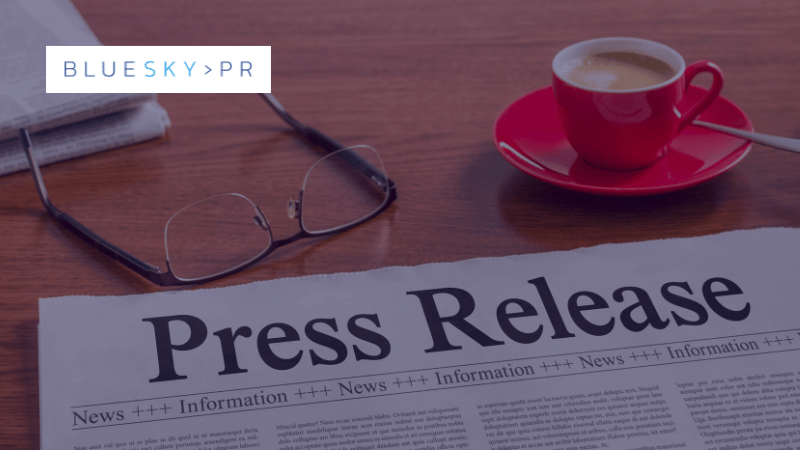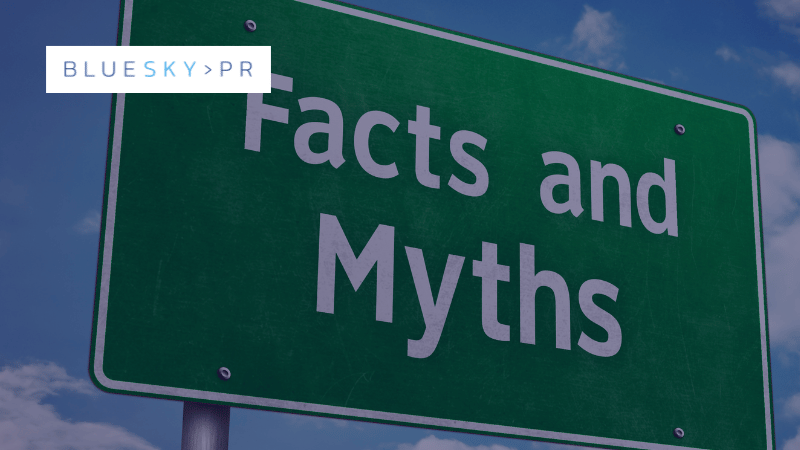PR for trade associations: an insider’s view
Spend enough time inside a trade body, and you start to understand the rhythm of association life. It’s cyclical: annual conferences, member forums, board meetings, and consultations. Much of the work is behind the scenes and involves writing position papers, negotiating with regulators, and supporting members. It’s meaningful, meticulous, and often invisible to the outside world.
That invisibility is part of the problem.
The quiet efficiency of many trade associations has historically been seen as a strength. “We’re not here to shout,” some say, “we’re here to work.” But in today’s media environment, silence isn’t interpreted as diligence - it’s seen as absence. And absence breeds irrelevance.
Having worked closely with trade associations across sectors - from logistics to life sciences, construction to creative industries - one truth holds steady: associations with a proactive, professional PR strategy are not just better known; they’re better respected, more trusted, and more effective.
Effective PR does not mean attention-seeking. It means value-communicating, and taking the complex realities your sector faces and turning them into narratives that inform policy, inspire trust, and invite dialogue. It means ensuring that when your industry is discussed in the press, your voice is part of the conversation, not watching from the sidelines.
And it’s not just about external audiences. Members, too, want to feel that their association is present, visible, and vocal. When they see their association quoted in national media, speaking at summits, or shaping public debate, it reinforces their sense of belonging and pride. That’s member engagement you can’t fake — and it’s powered by PR.
How to build a PR plan for your trade association
Creating an effective PR plan for a trade association is not just about deciding when to send a press release. It’s about building a long-term strategy that aligns with your organisation’s purpose, voice, and vision — and then executing it with consistency and clarity.
Begin with your goals. What is your association aiming to achieve over the next 12 to 24 months? Are you seeking to influence a specific piece of legislation? Improve the public perception of your industry? Grow your membership base? Establish your leadership team as sector authorities? PR should not sit apart from these goals; in fact, it should accelerate them.
From there, examine your audience. You don’t speak to the general public in the same way you speak to ministers, journalists, or members. Each group has different needs, languages, and motivations. Define these audiences clearly, then map your communications approach to them. Identify what they care about, what media they consume, and what formats engage them.
Once you’ve mapped your goals and audiences, you can craft the messages. What is the story of your sector that people aren’t hearing? What myths do you need to dispel? What innovations are being overlooked? What contributions go unrecognised? Your messaging should be honest but optimistic, confident without arrogance, and always rooted in real examples.
From here, build your content calendar. PR doesn’t live in silos - it thrives on rhythm. Look at your association calendar: events, reports, consultation deadlines, and member milestones. Use these as anchor points for regular content. Plan op-eds around campaign launches, secure media briefings before major announcements, and pitch feature stories linked to wider news cycles.
Media relationships are the final, crucial component. Don’t just wait for journalists to call, instead build rapport before you need them. Share insights, offer access to data, and invite them to roundtables. Become a trusted source, not just a reactive quote machine.
The most successful PR plans are those that integrate with every part of the association’s operations from policy and public affairs to events and member engagement. When your entire team understands the value of visibility, PR becomes not just a tactic, but a mindset.
Related blog posts
Best practices for member newsletters that drive renewals
Outside of shaping policy decisions and growing its influence, driving member renewals is one of the core areas of attention for any trade...
How trade associations can use PR to influence policy
Trade associations hold a quiet, but practical power that doesn’t always make headlines, but does quietly shift the shape of policies in ways that...
How to develop the best PR stories
Trade associations often sit on a goldmine of stories without realising it. In the rush of policy deadlines, member meetings, and sector challenges, the raw material for powerful narratives gets overlooked. But good PR begins with good storytelling, and in this context, “good” doesn’t mean flashy or fictional. It means real, relevant, and resonant.
Start with people. Behind every regulation you campaign for, every policy you promote, there are human lives affected. The employee whose job is saved by industry reform. The apprentice whose future was shaped by sector investment. The small business owner who thrives thanks to fairer regulation. These stories make the abstract real, and they are ultimately your most compelling content, and potentially your greatest PR asset.
Next, it’s worth looking at impact. Trade associations are often at the centre of change, helping industries navigate Brexit, for example, automation, decarbonisation, skills shortages and AI. The work being delivered may be technical, but its implications are societal. When you frame your activity in terms of outcomes, jobs created, standards raised, and communities supported, you create stories the media wants to tell.
Innovation is another rich seam. Depending on your area of focus, your members are pioneering technologies, solving challenges, and setting new benchmarks. Shine a light on their achievements - not just to promote them, but to demonstrate the vitality of your sector. Journalists love stories of firsts, breakthroughs, and best practices.
Crisis can also create opportunity. When an industry faces scandal or scrutiny, the association has a choice: retreat or lead. The latter demands transparency, but it earns trust. By taking a proactive stance, offering facts, context, and solutions, you transform a reputational risk into a reputational reset.
Ultimately, the best PR stories for trade associations are those that blend the specific with the strategic. They showcase individual examples while speaking to broader truths. And they do so with clarity, humanity, and purpose.
Writing a press release that resonates with stakeholders
The press release is the bread and butter of PR. Yet too often, it’s treated as a formality and as a templated, jargon-heavy announcement that often disappears into the ether. For trade associations, this is a missed opportunity. A well-crafted press release can not only earn you coverage but it can also establish you as a credible voice, a newsmaker, and a go-to source.
The key is to treat your release not as an information dump, but as a piece of communication. What are you trying to say, and ultimately why should anyone care? That’s your north star. Every paragraph, every quote, every headline should reinforce that core value.
Start with clarity. Your headline must be sharp, specific, and engaging. “New Report Published” is a non-starter. “UK Engineering Sector Faces 40,000 Worker Shortfall by 2030, Says Trade Body” gets attention. It tells the reader why it matters and what’s at stake.
Your opening paragraph should answer the core journalistic questions: who, what, when, where, and why. Resist the urge to bury the lead under layers of context. Put the news up front, then use the rest of the release to add depth and detail. This is often referred to as an inverted pyramid structure, and it’s proven to work.
Quotes are your opportunity to inject personality, insight, and authority. Avoid platitudes. Let your spokesperson speak like a human, not a policy robot. “We are delighted…” rarely adds value. Instead, offer reaction, analysis, and a call to action.
Don’t shy away from offering context. A press release isn’t just about what happened — it’s about why it matters. Tie your news to wider issues: skills gaps, economic growth, sustainability, and global trends. Help journalists connect the dots.
Finally, think about distribution. A press release is only as effective as its reach. Send it directly to relevant journalists, share it across your social platforms, include it in newsletters, and post it on your website. But don’t stop there. Follow up. Offer interviews. Provide supporting data. Be available.
When done well, a press release is more than just a headline; it can be a statement of leadership. And in a sector that thrives on trust and authority, that’s a statement worth making.

How trade associations can successfully engage with journalists
In many ways, the relationship between trade associations and the media should be symbiotic. Journalists need informed, reliable sources who can explain industry developments clearly and authoritatively. Associations need platforms to share insight, news, and influence public perception. And yet, despite the obvious alignment, many trade associations struggle to develop strong media relationships, often defaulting to reactive communications rather than proactive engagement.
The key to effective media relations lies in consistency and value. It’s not about issuing a press release every now and then; instead, it’s about becoming a trusted source. Journalists work to tight deadlines and are inundated with hundreds of pitches on a daily basis. They don’t have time for vague updates or self-serving soundbites. What they value is clarity, relevance, and reliability.
This begins by understanding what each journalist or outlet is interested in. Financial editors are likely to care about economic impact, jobs, investment, and regulatory shifts. Trade press may be looking for practical case studies, sector-specific trends, or innovations from your members. Political reporters will want reactions to legislation, policy analysis, and consultation responses. When engaging with journalists, always tailor your angle to their audience and beat.
Proactive engagement is equally important. Associations that only reach out when they want something, a campaign promoted, or a report covered, often find doors closing. That’s why it’s key to build relationships by being useful, even when you don’t need coverage. Offer background briefings, supply data to inform wider stories, or suggest members who might offer colour for a piece. Over time, you’ll build relationships with journalists and become the organisation they call when something happens in your industry — not just because you’re available, but because you’re credible.
Tone matters, too. While you represent a sector, you don’t need to sound like a bureaucrat. Journalists appreciate directness, clarity, and a human voice. That’s why it’s recommended to avoid jargon-heavy releases. Don’t bury your point beneath layers of nuance, and instead, tell the story. Own your viewpoint. Provide useful quotes that say something, not just safe generalities.
Put simply, respect the journalist’s role. Make their job easier. And be available, responsive, and transparent, especially when the story is difficult or unfolding quickly.
What trade associations need to do to identify the right media spokespeople
The spokesperson is the living, breathing embodiment of your trade association’s voice. In interviews, quotes, and broadcasts, these individuals must convey not only facts but authority, warmth, and confidence. It’s not an easy role, but with preparation and clarity, it can be one of your association’s most powerful assets.
A good spokesperson is more than just a figurehead. They understand the issues, they care about the industry, and they speak with conviction. They don’t just parrot pre-approved statements, instead they shape narratives. They know when to stay on message and when to answer with candour. They can handle hostile questions without becoming defensive, and they can pivot from policy detail to personal impact with ease.
Becoming that kind of spokesperson takes work. First, you must deeply understand your association’s key positions and tone of voice. Media training can help — not just in how to speak, but how to listen. Journalists may challenge you, seek soundbites, or ask you to respond to criticism. Preparation means rehearsing for these moments, not avoiding them.
Clarity is crucial. In interviews, especially broadcast, there’s little room for rambling. The most effective spokespeople communicate three things; a clear message, a relevant example, and a memorable quote. Spokespeople themselves should look to practice distilling complex topics into digestible soundbites, without oversimplifying or talking down to the audience.
Authenticity also goes a long way. In an age where trust in institutions is fragile, spokespeople who come across as robotic or evasive will be ignored, or worse, ridiculed. There are plenty of examples of spokespeople damaging their brand more than the incident they were initially responding to. Don’t be afraid to show passion, to acknowledge uncertainty, or to use plain language. The goal is not to impress, it’s to connect and get the message across.
Finally, remember that the best media spokespeople are not always the most senior people in the organisation. Sometimes it’s the head of policy who understands the nuances best. Sometimes it’s a technical lead with a calm, informed presence. Whoever takes the mantle should be coached, briefed, and regularly supported. Media work is not a one-off event — it’s an ongoing capability, and one that trade associations ignore at their peril.
A few of our popular blog posts
How to view your competitors’ social media ads
Did you know that you can find Facebook paid ads your competitors in the recruitment industry are running? This comprehensive blog post explains how...
Why I wouldn't employ Adam!
You've probably heard about the unemployed graduate Adam who blew his last £500 on a billboard ad featuring a huge picture of himself and a link to...
Why Elon Musk shouldn’t have dropped his PR team
Elon Musk is never far from the news, and not always for the most positive reasons. This is why it was a surprise to see the Tesla and PayPal founder...
How PR and business development can support member engagement for trade associations
At first glance, PR and business development may seem like separate and disparate functions. One focuses on reputation and visibility, the other on growth and revenue. But in the world of trade associations, the two are intrinsically linked, because growth, influence, and member engagement all ultimately stem from visibility and credibility.
PR provides the foundation upon which business development thrives. Think about what motivates a potential member to join an association. They want to know they’re joining a credible, influential body — one that understands their challenges, represents their interests, and offers value beyond networking. If your name is regularly seen in trusted media, associated with smart commentary, effective lobbying, and high-profile campaigns, membership becomes an obvious investment.
Moreover, PR opens doors. Media exposure creates inbound interest. It signals activity and relevance. When your association’s work is featured in The Times or a sector magazine, it sparks conversations that your business development team can then convert. When policy wins are publicly documented, they create a narrative of impact. When members see themselves, their stories, successes, and challenges, reflected in your external communications, it deepens loyalty.
Good PR also reinforces retention. Members want to feel proud and want to point to the association's LinkedIn page or press coverage and say, “I’m part of that.” If your communications feel invisible, outdated, or uninspiring, that pride fades. Business development is not just about acquisition — it’s about resonance.
Importantly, PR also fuels your sales collateral. Think of every media feature, every quote in a government paper, every member case study, these are assets. Repackaged into brochures, pitches, webinars, and emails, they bring your value proposition to life. They show, not just tell, what your association does.
So, if you’re investing in member recruitment or partnerships, invest in PR. Because in today’s attention economy, visibility is currency. And credibility is the best lead generator of all.

Common PR misconceptions for trade associations; busting the myths
Despite the clear benefits that we’ve outlined, many trade associations still approach PR with hesitation and fear, often due to misconceptions that have lingered for far too long. These myths hold organisations back from fully realising their influence. Let’s tackle the most persistent ones.
“PR is just for crises or big announcements.”
This is perhaps the most limiting belief. While crisis communication and high-profile launches are part of PR, they’re not the whole picture. Effective PR is about sustained visibility. It’s the steady drumbeat of presence — in the media, on social channels, in thought leadership. Waiting until you “have something newsworthy” often means missing the chance to build a consistent voice.
“We don’t need PR, we have an internal comms team.”
There’s a subtle but important difference between internal communications and external PR. Internal comms keeps your members informed. PR ensures the outside world, i.e. policymakers, the public, journalists, and more, understands your sector’s value. The two should work in tandem, not as replacements for one another.
“We can’t afford PR.”
It’s true that PR requires resources, whether that’s internal staff or an external agency. But the cost of invisibility is far greater. When policymakers make decisions without industry input, when members leave for more dynamic organisations, when your competitors dominate the narrative, those are costs, too. Smart PR is an investment with compounding returns.
“Journalists aren’t interested in trade bodies.”
Wrong. In reality, journalists often prefer trade associations. You’re seen as impartial, data-rich, and representative. If you’re not getting interest, it may be a question of how, not what, you’re pitching.
“Our sector is too niche for media coverage.”
There’s no such thing. Every industry touches lives, drives employment, and contributes to GDP. What matters is how you tell the story. Focus on people, impact, and innovation. Connect your niche to wider themes, the environment, health, the economy. Suddenly, it’s not niche at all.
Breaking free from these myths is liberating. It allows your association to stop playing small and start leading the conversation your sector needs.
How trade associations can handle a PR crisis
No trade association wants to find itself at the centre of controversy. But in an age of 24/7 media, social scrutiny, and rapid reaction, crises are no longer a matter of “if”, they’re “when.” Whether it’s a member scandal, policy backlash, data breach, or a wider industry incident, how you respond will define not just that moment, but your long-term reputation.
The most important rule? Prepare before it happens. As the adage goes, ‘fail to prepare, prepare to fail’.
Crisis PR starts with scenario planning. Identify potential risks and vulnerabilities. Create a crisis plan that includes approval workflows, designated spokespeople, and holding statements. Make sure your media list and key contacts are up to date. When a crisis hits, the speed of your first response is critical, and planning ensures speed doesn’t come at the cost of accuracy.
When you do respond, transparency is your ally, and it’s worth avoiding adopting a defensive stance or vague corporate speak. Acknowledge the issue, show empathy and demonstrate action. People don’t expect perfection — they expect accountability and leadership.
Consistency is also key. Your messaging should be aligned across channels, including the website, social media, member emails, press statements. Conflicting messages breed confusion and mistrust.
And, crucially, don’t forget your internal audiences. Members, partners, and staff should hear directly from you, not through the media. Regular updates, open Q&As, and clear explanations go a long way toward maintaining trust.
Finally, debrief and review once the crisis has passed. What worked? What didn’t? How can your PR function become more resilient in future?
A crisis is a test of your PR maturity. Handled well, it can build trust, and prove that your association leads not only in success, but in challenge.
How trade associations can measure their PR success
For trade associations, proving the value of PR can be a delicate challenge. Unlike product-based businesses that can easily trace media mentions to sales, associations are often judged on broader outcomes; influence, visibility, reputation, and stakeholder trust. That doesn’t mean PR impact is intangible, it just means measurement needs to be smarter.
Start by aligning PR metrics with your strategic goals. What is PR helping you do, and what are your overall aims? To grow membership? Influence policy? Raise awareness of industry contributions? Build credibility with journalists and regulators? Once your goals are clear, your metrics will follow.
Media coverage remains a core measure, but ultimately quality trumps quantity. It’s not just how many mentions you get, but where they appear, what they say, and who sees them. A single in-depth interview in a respected national or sector publication can be more valuable than ten brief mentions in less popular blogs. Assess the sentiment, the accuracy of quotes, the prominence of your association’s role, and the relevance of the outlet to your audience.
Website analytics also offer insight. Spikes in traffic following a feature, increased time spent on pages linked from media, or higher engagement with campaign content can all indicate an effective PR campaign. Monitor referral traffic from media outlets to track real-world interest and action.
Social media engagement is another important barometer. When press coverage is shared widely, commented on, and repurposed by stakeholders, it’s a sign that your message is landing. Don’t just count likes, look at who’s interacting. Are journalists, policymakers, and industry leaders engaging with your content?
Internal feedback should also not be overlooked. Are your members hearing about your association more often? Are you being approached for partnerships, panels, or quotes? Are media inquiries becoming more frequent and targeted? These anecdotal signals matter, especially in a relationship-driven ecosystem like associations.
For more advanced tracking, consider media monitoring tools that offer share of voice analysis, competitor benchmarking, and automated sentiment scoring. These tools can help you demonstrate trends over time, showing that your presence in key conversations is growing, not static.
Ultimately, the goal of measurement is not just justification; it’s learning. Use your insights to refine your approach, double down on what works, and evolve your messaging. PR is not a vanity exercise. When done well, it’s a strategic function, and like any strategy, it should be accountable and measurable

Why trade associations must invest in PR
Every trade association faces several competing priorities: policy work, member services, events, training, and partnerships. PR can feel like a ‘nice to have’; something to revisit after the annual conference or once the next campaign is out the door. But this mindset is a missed opportunity. PR is not peripheral to your mission. It amplifies everything you do. There’s a reason that Bill Gates said if he was down to his last dollar, he would spend it on PR.
When trade associations invest in PR, they invest in visibility, credibility, and long-term impact. Think about the challenges you face: policy environments that change overnight, industries that are misunderstood by the public, declining membership interest, or fragmented sector voices. PR addresses all of these.
With a strong media presence, your policy recommendations carry more weight. When journalists already know your name, they’re more likely to quote your statement or request your opinion. When decision-makers regularly hear your voice in national or trade media, your influence multiplies.
PR also educates the public — and sometimes your industry — about what your sector does, why it matters, and where it’s going. You can’t expect policymakers to prioritise your needs if they don’t understand the market. You can’t expect talent to join your field if they’ve never heard of it. PR fills that gap — not just with facts, but with compelling, human-centred storytelling.
From a membership perspective, PR is a loyalty engine. Members want to belong to something visible, vocal, and respected. Seeing your association in the media affirms their decision to join. It reinforces their pride. And it often leads to more proactive participation, whether as media spokespeople, case studies, or event speakers.
Financially, PR pays for itself over time. Stronger visibility attracts sponsors, partners, and cross-sector collaboration. It enhances the appeal of your events, boosts delegate numbers, and provides material for marketing and sales campaigns.
In short: PR is not just about managing image. It’s about advancing missions. It’s the force multiplier for all your activity — and the longer you delay, the harder it is to catch up.
Case studies: Boosting brand recognition across the UK
What we did
BlueSky PR is a long-standing PR partner of Association of Professional Staffing Companies (APSCo) and this campaign represents just one strand of ongoing activity. With membership numbers growing rapidly outside of London and the South East – and member feedback suggesting that the association could do more to engage audiences outside of the Home Counties – APSCo was looking for an effective PR programme to supplement the creation of its hugely popular Regional Business Forums.
We achieved this by developing an ongoing news-led campaign harnessing robust data on regional job availability from APSCo Affiliate Member, Innovantage. Each month, the recruitment software company provides a detailed report on current vacancies which can be sliced and diced not only in terms of geography, but also by employment model and sector. As this data is essentially a by-product of everyday operations, it provides an accurate and detailed snapshot of regional employment markets - through which, hiring hotspots and areas where demand has dipped can be clearly identified.
These findings are then discussed with APSCo’s expert Membership Relations Managers, who are responsible for specific regions and able to add context to the hard data based on what members are seeing on the ground. As a result, we are able to draft regular, tailored press releases which offer unique and valuable insights on local markets.
What that meant for them
Through taking this approach, APSCo enjoyed well over 100 pieces of coverage across 66 regional publications – including The Scotsman, Manchester Evening News, Bristol Post and Irish Times - over the year. While the reach of this coverage is impressive in itself (the combined circulation is in excess of two million) this initiative, most importantly, helped APSCo to raise its profile among potential clients and candidates in the areas where its members are operating.
What they say
“BlueSky PR has undoubtedly achieved its objective of building the APSCo brand and its reputation as a ‘badge of quality’ in key target markets, through turning data which we already had at our fingertips into valuable PR coverage. The traction this campaign has gained has exceeded all expectations, with an average of 10 plus pieces of coverage every month – and the activity has been incredibly well received by journalists, members and audiences alike.” - Moya Rylands, Commercial Director, APSCo
Frequently asked questions
- What's the difference between trade association PR and lobbying?
-
PR focuses on public visibility, media relations, and reputation building to influence public opinion. Lobbying involves direct engagement with policymakers and government officials. The two work together but serve different strategic purposes.
- How do we measure PR success for a trade association?
-
Key metrics include media mentions in relevant publications, share of voice versus competitors, website traffic from media coverage, member engagement with press content, and stakeholder awareness surveys. Policy influence and membership growth are longer-term indicators.
- Should trade associations outsource PR or keep it in-house?
-
Most successful programmes combine both: internal coordination for member insights and culture, plus specialist agency expertise for media relationships, strategy development, and crisis management capabilities.
- What types of stories work best for trade association PR?
-
Data-driven insights, member success stories, policy position papers, industry trend analysis, and crisis responses perform best. Frame technical topics through human impact and economic significance for broader media appeal.
Choosing an agency for trade association PR
If your association decides to outsource its PR, the next question is: who should you partner with? While many agencies claim to offer sector expertise, not all are built the same, and the distinction between PR firms can be make-or-break.
A generalist PR agency may have a broad client base, from lifestyle brands to fintech to government campaigns. They might be excellent storytellers, creative campaigners, and media networkers. But without a deep understanding of your industry and policy environment, they may struggle to position your narrative in a way that resonates with the right stakeholders.
A specialist PR agency
, particularly one focused on associations, membership bodies, or regulated sectors, brings specialist domain knowledge. They understand the policy landscape, the nuances of trade press, the cycles of government consultation, and the sensitivities of your members. They know how to extract the value from a 100-page technical report and turn it into a media hook. They can anticipate risks, spot trends, and introduce you to the journalists who cover your space.
Of course, the ideal partner is not just technically competent, they’re also culturally aligned. They understand the tone your sector expects, the balance between boldness and caution, and the long-term nature of association reputation. They don’t chase quick wins, instead, they build sustainable narratives.
When choosing an agency, ask:
- Do they have experience with trade bodies or policy organisations?
- Can they demonstrate results in your sector or a similar one?
- Do they understand the balance between member interests and external messaging?
- Can they flex across channels — media, digital, events, lobbying?
Remember, this is not just a vendor relationship. A great PR partner becomes an extension of your leadership team. They advise, challenge, support, and elevate. Choose wisely — because in the world of PR, who tells your story matters just as much as what the story is.
Trade associations voices matter
Trade associations are more than just networking groups or policy commentators. You are the voice of your industry. You bring people together, protect standards, influence legislation, and shape futures. But in a crowded information landscape, having a voice is not enough, it must be heard, respected, and remembered.
PR is how you achieve that. It’s how you move from reacting to leading, from passive relevance to active influence. It’s how you ensure your members feel seen, your sector feels understood, and your leadership becomes undeniable.
So if your association is ready to grow, to lead, and to truly represent, start with your story. Tell it well, tell it often, and make sure the right people are listening.
Our core services
Our services are tailored to meet the specific needs and budget of recruitment agencies.
What our clients say
Women in Technology
“BlueSky worked hard to effectively raise Women in Technology’s profile by generating positive coverage in national media & sector specific press. BlueSky understands its client’s needs and are able to accurately present core messages through every available channel. They not only generated quality content, they also successfully managed award nominations, online media & press relations. As a result our brand was elevated which, in turn, strengthened my own position as an expert within my field.”
Alexa Bradbury, Global Marketing Director
“We’ve been working with the BlueSky team to support our global PR programme on a project and retained basis for over five years now. The team is very proactive, knows the talent management arena inside out and really understands our business and its objectives. And all this means that they consistently achieve fantastic media coverage for us. I’d have no hesitation in recommending them to anyone seeking PR and marcomms support.”
Marisa Kacary, Managing Director - Brand, Marketing & Communications
“BlueSky has been a long term partner to AMS and has provided an invaluable and responsive service throughout the pandemic in particular. They have been agile and thoughtful, and acted as an extension of our team.”
Lewis Richards, Founder
“During these unprecedented times, BlueSky PR has provided us with the support needed to raise our profile within the sectors we work in and also strengthened our business development. We have used the high-quality blog content to re-engage existing prospects via our monthly newsletter, while the strong organic search results combined with social media activity have enabled us to generate engage with candidates and clients.”
Ed Martin, Marketing Director EMEA
“The BlueSky PR team became a real partner for Sterling EMEA as soon as we engaged them for media relations support. Not only were they able to secure us fantastic coverage in leading publications, but they also produced brilliant content on our behalf. They were able to take the knowledge and information from the team and turn it into engaging copy that really raised our profile as a thought leader in background screening. Having a partner that proactively suggested new ideas and flagged news for us to comment on really helped grow Sterling’s profile. I would highly recommend them.”
Julia O’Connor, General Manager
“BlueSky PR has dramatically increased the visibility and engagement across our social media channels enabling us to reach new audiences and keep our divisions front of mind for existing candidates and clients.”
Graham Palfery-Smith, Chairman
“BlueSky PR has been an integral part of the 6CATS team for a number of years and their support growing our social media presence has been hugely valuable. Being able to trust the team with our online communication and provide the guidance we need to benefit from paid social media campaigns has certainly had a positive impact on our brand.”
Rob Quirk, Head of Marketing
“
I recently attended BlueSky’s PR workshop and couldn’t recommend it enough. Tracey is a genuine expert and leader in her field and is happy to share that expertise taking you through all elements of the PR journey. From PR’s role in driving awareness and brand value, through to the creation of press releases, distribution, networking with relevant journalists and publications, crisis management and the all-important strategy and ROI, no stone is left unturned.
What I found especially useful was the relevance to recruitment and our business. Much of the content was tailored to Harnham with practical examples that we could immediately implement and gain quick results alongside more longer term goals. 5 stars!”
Tim Connolly, Founding Partner
“
Tracey is quite simply one of the most impressive individuals I’ve met in the communications and recruitment industries over the last 20 years.
Despite having an incredible wealth of knowledge and being so well connected, she is incredibly unassuming, modest and down to earth in her approach which makes working with her always a pleasure. She is incredibly generous, constantly giving tonnes of additional value above and beyond the normal boundaries of supplier and client relationship.
Tracey’s a joy to work with. She’s artfully consultative in a way that engages and elicits the best out of any dialogue, providing clarity of approach in a strategic and consultative manner but one which never loses sight of creating clear and attainable commercial objectives.
She is that rare gem: a creative and commercial force who gets it and has that focus to help us get it too.”
Richard Lowe, Managing Director
“We used BlueSky to establish a market presence using social media aimed at our target markets. The BlueSky team are experts at their work and operate in very close and effective co-operation with our team. Strongly recommended.”
Michael Johnson Ellis, Managing Director
“I’ve known Tracey for almost 5 years now and have witnessed first-hand the sheer brilliance of her established network as not only an ex-Recruiter but as one of the industry’s best connected PR professionals within our space. Tracey and Carly Smith at BlueSkyPR have helped Healthier Recruitment raise its profile and have strengthened our business development as a result of the excellent PR that Tracey and Carly Smith have secured. Can’t recommend enough. Thank you BlueSky team.”
Paul Payne, Managing Director and Co-Founder
“Being featured on one of the busiest news segments in UK TV is obviously great news for us and allows our skills and expertise to reach a potentially enormous audience. We were hugely impressed at the speed with which it came together. We were contacted on a Sunday night and were interviewed on the Monday afternoon which involved having a full camera and recording team come to Southampton from London to film the segment. Without BlueSky this wouldn’t have happened and we’re very grateful for their help.”
Michael Johnson-Ellis, Director of Business Development
“BlueSky PR managed to unlock the knowledge that we had inside the business and share it with a national audience of key stakeholders. The profile of our CEO, Nick Simpson, has increased exponentially since we began working together and the coverage we have achieved together has no doubt assisted our wider business objectives.”
Julian Moore, Head of Marketing
“We knew that the unique data we generated would be of interest to the communications industry, but the challenge for us was how to develop a media partnership that would get the VMA brand name and the report in front of our key senior-comms audience. Not only were BlueSky PR able to secure an exclusive agreement with one of our top targets, but they did so without the need for any advertorial costs.”
Michael Bennett, Director
“Since we’ve started working with BlueSky I’ve been consistently impressed by the team’s deep knowledge of the recruitment and talent management sectors as well as their strong networks in the UK media. BlueSky has secured us great coverage in a range of media and on various platforms and channels for all of our UK brands. They can work on an almost entirely self-sufficient basis and are very good at being proactive and spotting PR opportunities when they arise. They’ve also proved themselves to be adaptable and very easy to deal with meaning that any issues are resolved almost immediately.”
David Press, Director
“Through effective blogging, social media and a first class service, BlueSky has given our business the profile it needs in a competitive and changing market. What started as a discretionary spend is now an essential part of our budget and business strategy as we continue to grow the business. We have been very impressed with the creativity and more importantly quality of the PR BlueSky produce for us each month.”
Gill Bell, HR Director
“We’ve been working with the team at BlueSky PR for over two years. As a business our aim was to build our brand and gain more exposure within our client industry press. BlueSky has provided fantastic support in helping us develop a year-long plan with various deliverables to ensure we achieve our goal. They have succeeded in securing some really diverse press coverage, both traditional and online, as well as establishing a great social networking presence. The icing on the cake is their in-depth knowledge of the recruitment market, which speeds up the whole process. They are a pleasure to work with!”
Tony Goodwin, CEO
“It took me 10 years to find a PR and marketing company that really understood what I was trying to achieve with the survey I wanted to do. Well done everyone involved and special thanks to the team at BlueSky.”
Catherine Cook, Marketing Manager
“At a&dc we are seen as leaders in the field of behavioural assessment and development, and our clients look to us for the latest thinking and research. In order to really portray ourselves as thought leaders , we feel that PR is absolutely critical. And since we began working with BlueSky in September 2012 we have come to rely on PR. We are now able to seek out opportunities within industry and national press, both in digital and in print, reaching a much wider audience.”
Adrian Kinnersley, MD
“The team at BlueSky have generated an impressive amount of coverage for Twenty but it doesn’t stop there. They have a refreshing approach when it comes to PR and understand that it covers so much more than just the media. They have been instrumental in developing copy for our website; for our employer branding messages and for our social media channels. Regular visitors to the office, and popular with the whole team, BlueSky is more than just a supplier; they are a key strategic advisor.”
Partner with BlueSky PR to take your business to the next level
If you're looking for a trusted partner to help you reach your target audience and improve your search engine rankings, look no further than BlueSky PR.
.png)
years
Our team of experts have been working with some of the world's most prestigious brands, as well as smaller businesses looking to grow their footprint in the market for over 19 years. We offer a range of services, including traditional media relations, reputation management, content creation, and crisis communications.







